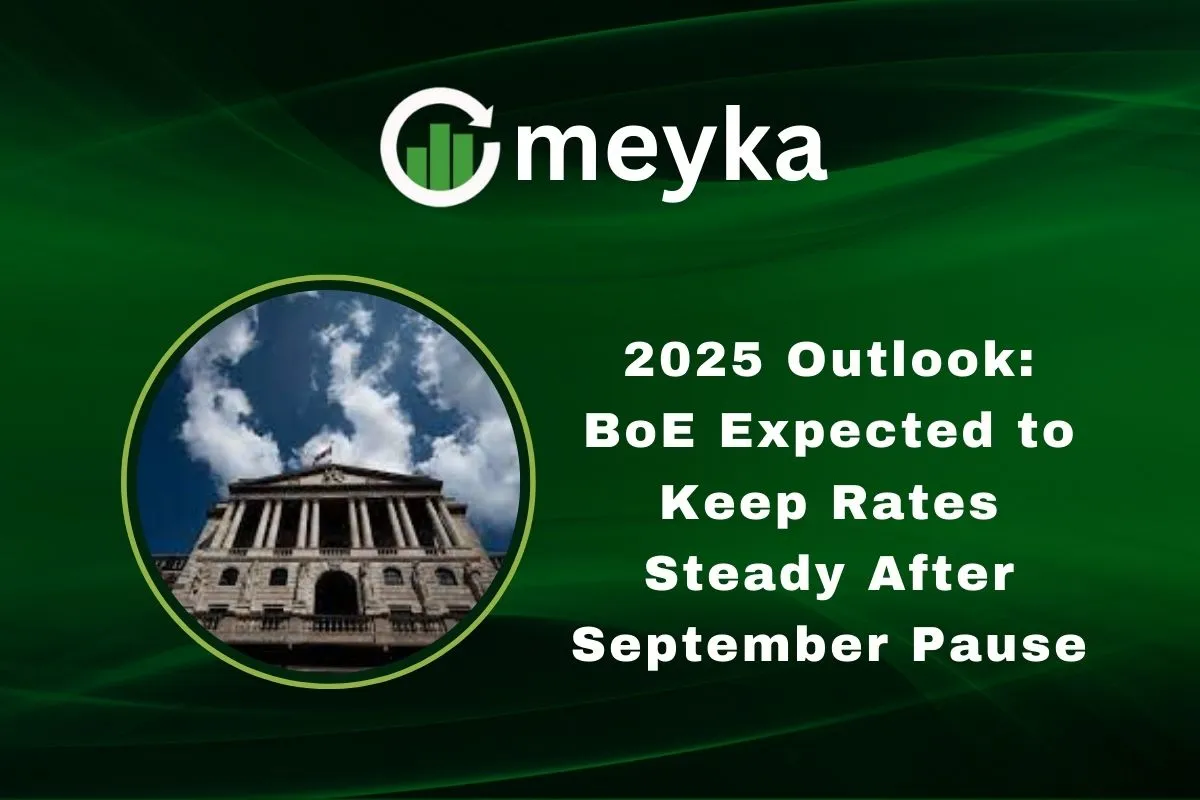2025 Outlook: BoE Expected to Keep Rates Steady After September Pause
On September 18, 2025, the Bank of England (BoE) decided to maintain its key interest rate at 4%, following a series of rate cuts that began in mid-2024. This pause reflects ongoing concerns over persistent inflation, which remains significantly above the BoE’s 2% target. Governor Andrew Bailey stressed caution, noting that the UK still faces challenges with inflation and is not fully past the risk. We examine the factors influencing the BoE’s decision and explore the economic landscape for the remainder of 2025.
Background: BoE’s Monetary Policy Journey
In response to rising inflation, the BoE initiated a series of interest rate hikes in late 2021, aiming to bring inflation back to its 2% target. By mid-2024, as inflation pressures eased, the BoE began gradually reducing rates. However, the recent decision to pause rate cuts indicates a cautious approach, balancing the need to control inflation with the desire to support economic growth.
UK Economic Landscape in Late 2025
As of August 2025, the UK’s inflation rate stood at 3.8%, nearly double the BoE’s target. Factors contributing to this include rising food prices and a cooling labor market, with unemployment reaching a four-year high. Economic growth remains sluggish, with GDP growth expectations slightly revised upward from 0.3% to 0.4% for Q3 2025.
Inflation Outlook and Key Drivers
The BoE forecasts that inflation will peak at 4% in September 2025, gradually declining to its 2% target by mid-2027. Key drivers of persistent inflation include high wage growth and increased government spending. Governor Bailey highlighted that factors such as increased payroll taxes and a higher minimum wage contribute to ongoing inflation pressures.
Why BoE Is Expected to Hold Rates in 2025
The BoE’s decision to keep rates steady reflects a cautious approach, balancing the need to control inflation with the desire to support economic growth. Market expectations align with this stance, with major financial institutions such as Goldman Sachs, Citigroup, and J.P. Morgan anticipating no further rate cuts in 2025.
Risks That Could Shift BoE’s Policy
Several factors could influence the BoE’s future policy decisions:
- Upside Risks: A resurgence in inflation due to stronger wage growth or external shocks could prompt the BoE to reconsider rate cuts.
- Downside Risks: Weak economic growth or a downturn in the housing market could lead to calls for rate cuts to stimulate the economy.
The BoE remains vigilant, monitoring economic indicators to adjust its policy as necessary.
Market & Investor Implications
The BoE’s decision to maintain rates at 4% has implications for various sectors:
- Equities: Stock markets may experience volatility as investors adjust to the BoE’s cautious stance.
- Bonds: The slowdown in the BoE’s quantitative tightening program, reducing bond sales from £100 billion to £70 billion, aims to ease pressure on the bond market.
- Currency: The pound may fluctuate in response to changes in interest rate expectations.
Investors should remain informed about BoE policy developments to navigate potential market shifts.
Conclusion
The BoE’s decision to keep interest rates steady at 4% reflects a cautious approach amid persistent inflation and uncertain economic conditions. While the outlook suggests a gradual return to the 2% inflation target by mid-2027, the BoE remains vigilant, ready to adjust its policy as necessary to support economic stability.
FAQS:
In 2025, the UK economy shows signs of recovery with projected GDP growth of 1.2%. However, persistent inflation and global uncertainties may limit a fully bullish market.
The Bank of England (BoE) is a central bank, not a stock. If referring to BlackRock Enhanced Global Dividend Trust (BOE), analysts suggest a cautious approach due to market volatility.
The European Central Bank (ECB) has paused rate cuts, maintaining a 2% deposit rate. Analysts anticipate no further cuts in 2025, focusing on economic stability.
Disclaimer:
This content is for informational purposes only and is not financial advice. Always conduct your research.






